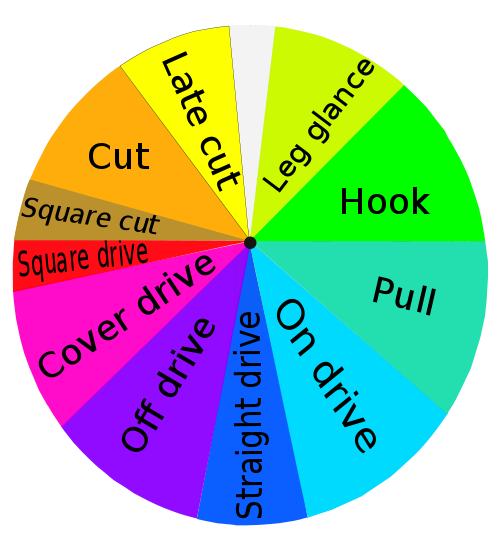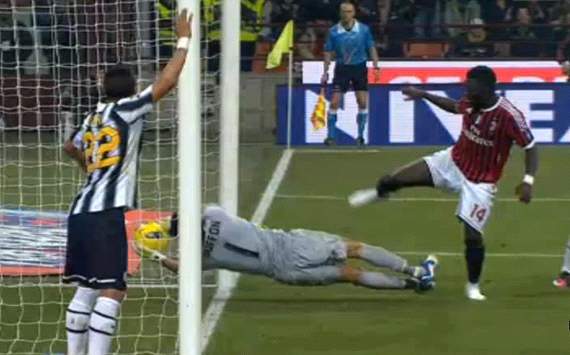There are so many places to get a perfect view of a major sporting event – or even those more obscure competitive activities: extreme ironing or cheese rolling, for example. You can still attend the venue if you are quick to dive onto the web and bag the front row, back row, pitch level or behind-the-goal spot – did you get those 2012 London Olympic lottery tickets?
Front Row, Front Room
If you missed the rush or don’t have a season ticket then fear not: a plethora of digital TV channels and high speed broadband internet streaming mean your local living room – or local pub – can get you close to the action in high definition clarity. So sharp you can really see where the ball lands better than if you were playing yourself, right?
You Cannot Be Serious?!
As interactive options and player-cams make sporting events more and more like video gaming, one technology has been focussed on at least making the results fair and accurate. British company Hawk-Eye Innovations Limited, have spent the last decade refining their system to ensure correct line calls, goal-line decisions and the occasional “Owzat!”
With a network of cameras to triangulate position and a set of CPU’s that love mathematics, the trajectory of projectiles such as tennis balls, snooker balls, cricket balls, and footballs are calculated and superimposed upon the known dimensions and strategic points on the court, table, pitch (and pitch again) respectively, to return the point of interest – or contention.
The digital brain power has to contend with the weather conditions (always an unknown in an outdoor pursuit), such as wind causing camera wobble, direct sunlight and cloud cover, bright floodlights and shadows.
It’s Just Not Cricket…
…Or tennis, snooker or football – the system is also being evaluated for usage in Gaelic football and hurling by the Gaelic Athletic Association. For these potential new sports, plus cricket and football, the system is intended primarily as verification back up for the umpire or referee’s decision. This virtual reality tracking capability is able to provide a second opinion for determination of whether a player was guilty of LBW or if the ball crossed the goal-line.
It’s in tennis where the implementation really adds the video game element; with the “Challenge System”. Players get 3 lives, or incorrect challenges, per set and can choose when to use them. This is where it can get a little strategic, as throwing a decision over to the Hawk-Eye digital replay can gain a bit of breathing time – tactics are no longer delivered solely by the racket. It is also customary to go to the vote when the match has been lost – in a (usually) vain attempt to have a technical glitch call the last ball in your favour.
Fun Facts
The data that is collected is not only used for officiating, but the detail and quantity of the information allows for interesting in-depth analysis of the sport for the TV viewer, whatever your sports package (click here for more information on TalkTalk’s options). Broadcasting experts can now give viewers the low-down on a wealth of trivia:
- How far a player runs in a point, set, match or season!
- Where all of the serves have been aimed in the box.
- Potting trigonometry and “shadows” obscuring the cue ball’s path.
- “Wagon wheel” of angles the batsman has hit in earning runs.
Image from wikipedia
C’Mon Ref!
The next step is usage for goal-line technology, which has now reached the point of being licensed to FIFA. The most important rule being that a decision must be made and conveyed to the referee within the understood definition of immediate, which is actually 5 seconds.
The system broadcasts the decision to the referee within this timeframe – which then appears on the official’s futuristic digital watch. The hope is, finally, that this will signal an end to “ghost goals”; where the human-eye view of whether the ball crossed the line does not agree with the TV replay. One example which furthered the case for this technology was Milan vs Juventus Serie A February 2012.
Image from wikimedia
Get in the Game
Further expanding the implementation of the simulation capabilities of Hawk-Eye, the games developer Codemasters has licensed the brand for several of its cricket titles, e.g. International Cricket 2010, and the Xbox 360 version of Smash Court Tennis 3.
This week Andy Murray starts the defence of his US Open title – use your challenges wisely!



